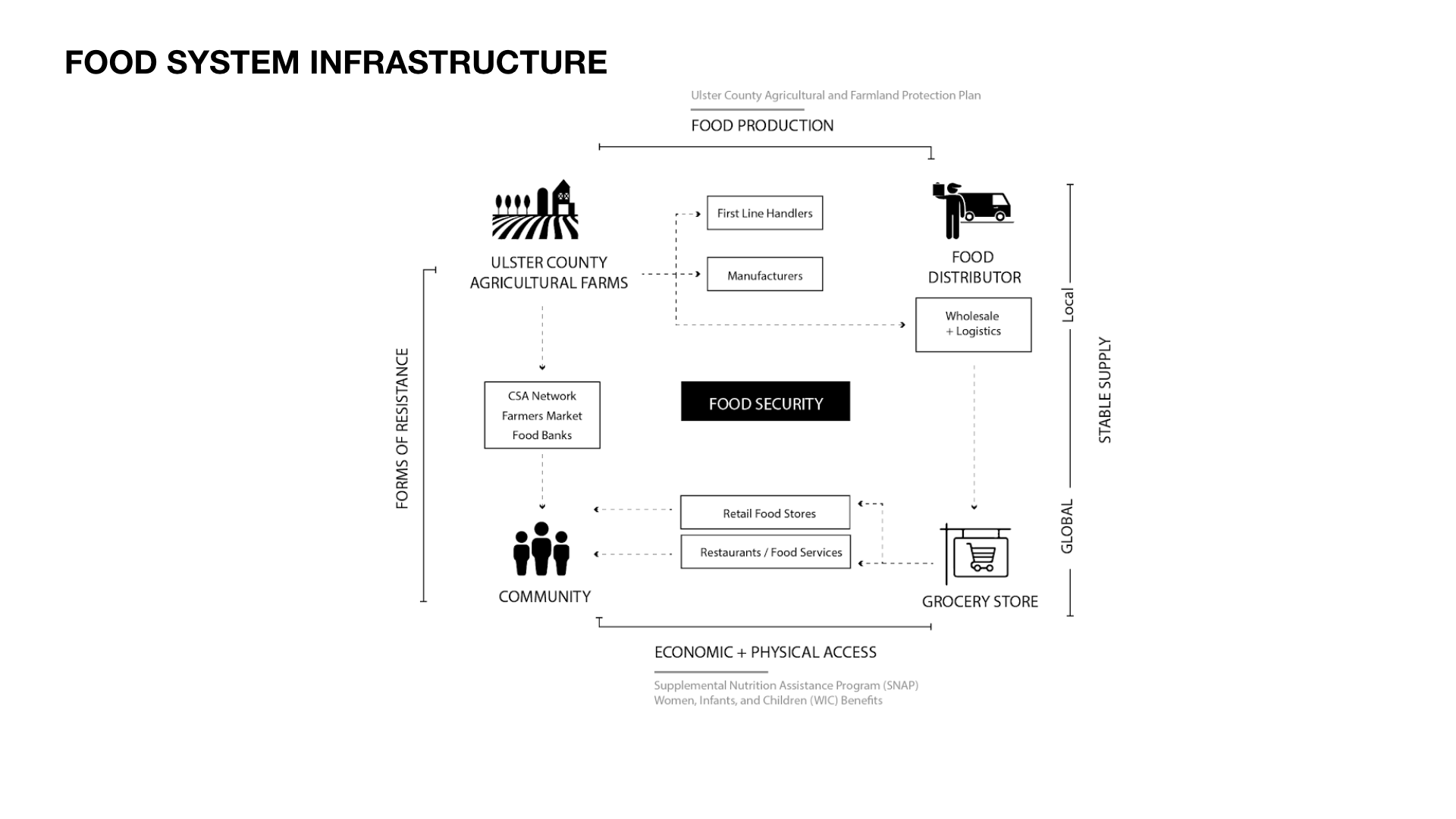Food as Soft Power
The Collapse of Corporate Infrastructure and the Resilience of Local Systems in the Hudson Valley
 Source: “Benton farms HDR” by thaddselden is licensed under CC BY-SA 2.0
Source: “Benton farms HDR” by thaddselden is licensed under CC BY-SA 2.0
While food can transcend cultural boundaries, it is also a site of conflict. This research focuses on the superfluous nature of corporate supply chains. In this study, the broader systemic fractures of the food system are revealed through the examination of corporate infrastructures’ role in exacerbating food insecurity in the Hudson Valley during the COVID-19 pandemic.
Food Insecurity
Food insecurity is defined as a lack of consistent access to enough food for every person in a household to live an active, healthy life. This can be a temporary situation for a household or can last a long time. The coronavirus pandemic has compounded the patterns of vulnerability that cause food insecurity as schools closed and people lost their jobs.
This map compares food insecurity in NY state pre (2019) and post (2020) COVID. Source: Feeding America Map the Meal Gap

Infrastructure networks facilitate the flow of goods and allow for their exchange over space. These systems simultaneously reveal forms of political rationality that shape their terms of access. While food infrastructures promise development and stability, their breakdowns reveal unsustainable notions of progress and economic growth. The tension between promise and failure makes infrastructure a productive site for analysis.
This diagram illustrates the increasing vulnerability of food the further it travels from its source and the apparatuses of infrastructural dependency embedded within food systems. A select few corporations have monopolized these networks, so when one fails, the ripple effects are felt throughout the country. This is the reason why most food has to travel at least 100 miles to be stocked right next to its source in Ulster County.
In contrast, short food chains are being established, such as community supported agriculture, farmers markets, and food banks. This following research looks further into these grassroots organizing efforts and their fundamental role in the Hudson Valley’s food supply chain.
Apple Case Study

For example, here is a case study that compares two apples purchased in Kingston, New York. One is from Walmart, and the other is from the local farmers market. The vast difference in mileage required to produce the same apple in Kingston demonstrates the excessive nature of corporate supply chains.
Ulster County
click here for full screen version of this map
Kingston
click here for full screen version of this map
Forms of Resistance
Forms of resistance to corporate supply chains include grassroots organization, local food pantries, community fridges, farmers markets, and meal delivery services. When corporate supply chains such as Walmart collapsed during the Covid-19 pandemic, local systems were able to continue operating which created community resilience despite the circumstances.
Conclusion
How does food infrastructure perform as a tool of soft power? Our research illuminates the increasing vulnerability of food the further it travels from its source and the apparatuses of infrastructural dependency embedded within the Hudson Valley food system. By examining infrastructure and the injustices within it, we hope to render visible the systemic issues present in our broader food systems. The Covid-19 pandemic has exacerbated the inefficiencies and weaknesses within corporate food infrastructure, so the argument for a local, sustainable, and just food system becomes critical for our shared future.
Citations
Anand, Nikhil. Promise of Infrastructure. Duke University Press, 2018.
Bureau, U. (2021, March 24). American community SURVEY (ACS). Retrieved April 24, 2021, from https://www.census.gov/programs-surveys/acs/
Driver, Kelly, and JH Bloomberg School of Public Health. “Hunger and Food Insecurity.” Johns Hopkins Bloomberg School of Public Health, 5 Aug. 2016, www.foodsystemprimer.org/food-and-nutrition/hunger-and-food-insecurity/.
“How Do You Measure Hunger?” Feeding America, www.feedingamerica.org/hunger-in-america/food-insecurity.
Hudson Valley Farm Hub, 24 Mar. 2021, hvfarmhub.org/.
“Growing Food Equity in New York City.” Data Team, council.nyc.gov/data/food-equity/.
“Overview.” USDA ERS - Food Security in the U.S., www.ers.usda.gov/topics/food-nutrition-assistance/food-security-in-the-us.aspx.